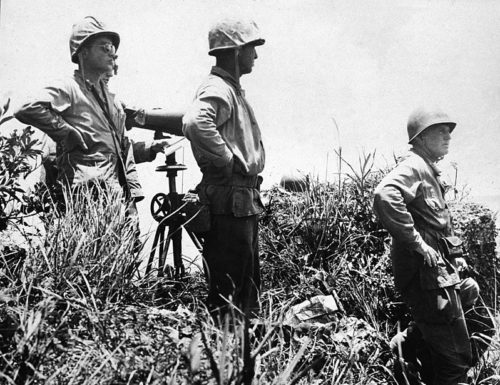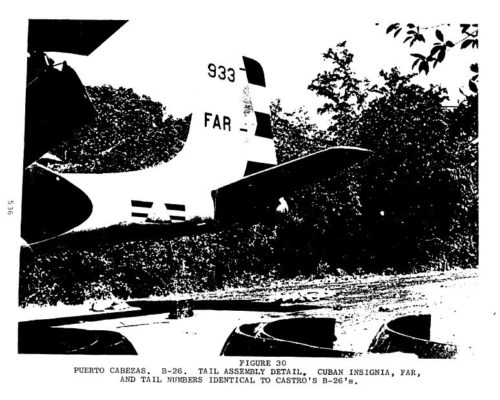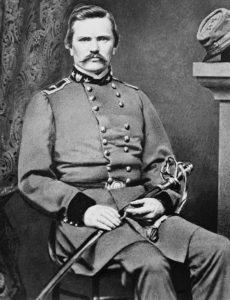April 19 in military history
[This Day in Military History is published daily at OpsLens.com]
1775: An expedition of 700 British regulars under the command of Lt. Col. Frances Smith departs Boston to seize and destroy military stores of the Massachusetts Militia in Concord. At dawn, 70 militia members led by Capt. John Parker meet the British at Lexington, and the two sides briefly skirmish. The Americans withdraw and regroup, attacking the redcoats again at North Bridge with a much larger force, forcing the British to turn back towards Boston.
The American Revolution has begun.
1861: 86 years to the day after the “shot heard round the world,” Massachusetts volunteers headed for Washington, D.C. are attacked by a secessionist mob in Baltimore. Four soldiers and eight rioters die in the opening shots of the American Civil War.
Meanwhile, Pres. Abraham Lincoln orders a Naval blockade of Confederate ports in South Carolina, Georgia, Alabama, Florida, Mississippi, Louisiana, and Texas. The blockade is extended to North Carolina and Virginia the following week.
1917: The Army-chartered transport ship SS Mongolia becomes the first vessel to challenge Germany’s naval blockade of England. Fitted with three 6-in. guns manned by Naval crews, Mongolia drives off and damages – possibly sinking – a German U-boat in the United States’ first Naval engagement since entering World War I.
1945: Following the most massive artillery, Naval gunfire and air bombardment of the Pacific War, U.S. soldiers and Marines of Lt. Gen. Simon Bolivar Buckner Jr.’s combined Tenth Army launch a coordinated ground assault against the dug-in Japanese defenders of the infamous Shuri Line on Okinawa.

In June, Buckner, the son of Confederate Gen. Simon Bolivar Buckner, becomes the highest-ranking U.S. officer killed in action during World War II. His replacement, Maj. Gen. Roy S. Geiger is the only Marine to ever command a field army.
1960: Grumman’s A-6 Intruder makes its first flight. The Navy and Marine Corps relied heavily on the versatile all weather/night attack aircraft until the Intruder’s retirement 1997, and the Marines still operate the EA-6B “Prowler” electronic warfare variant nearly 60 years later.
1961: Shortly after midnight, three pairs of A-26 Intruder bombers take off from a covert base in Nicaragua known as “Happy Valley” to provide air support to anti-Communist ground forces, now in their third day of fighting at Bahia de Cochinos – the Bay of Pigs. The CIA attack planes are painted in Cuban Air Force colors and crewed by volunteer Alabama Air National Guard members.

Two CIA Intruders are shot down; Riley Shamburger, Wade C. Gray, Pete W. Ray, and Leo F. Baker are killed.
1967: Maj. Leo K. Thorsness, leading a flight of Air Force F-105 “Thunderchief” aircraft on a “Wild Weasel” mission in a heavily defended area around Hanoi, North Vietnam, destroys two surface-to-air missile sites. When one of his planes is hit and the crew has to eject, Thorsness circles the area to notify search and rescue crews of the downed airmen’s location.
Spotting an enemy MiG-17 in the area, he engages and kills the enemy fighter, and draws its wingmen off as he heads for fuel. After refueling, helicopter crews attempting to rescue Thorsness’ teammates reported more enemy fighters in the area. He damages one MiG and drives the rest away from the area.
For his actions, Thorsness is awarded the Medal of Honor.
1989: The number two 16-inch turret on USS Iowa (BB-61) explodes during a live-fire exercise near Puerto Rico, killing 47 sailors.

Of note: 100 years before his son died on Okinawa, Buckner Sr. was teaching at West Point. He resigned from the USMA and joined the 6th Infantry Regiment to fight in the Mexican-American War. He later served in the Civil War as a Confederate general. He spent several months as a prisoner of war after surrendering his army at Fort Donnelson (Tenn.) until being exchanged for a Union general.
Buckner Sr. is the first Confederate general to surrender an army and will be one of the last. Buckner Jr. is born in 1886 and was personally granted an appointment to West Point (on his father’s request) by Pres. Theodore Roosevelt.
Incidentally, Buckner Sr.’s childhood friend was Union general Thomas J. Wood, whom he faced in the Battles of Perryville (Ala.) and Chickamagua (Ga.).